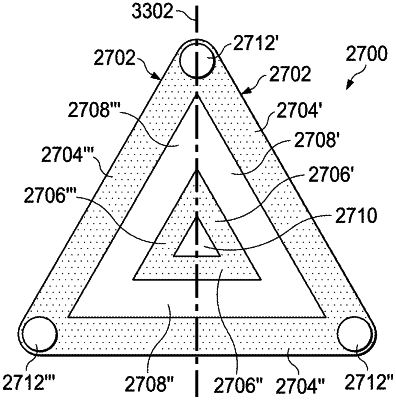| CPC B60Q 1/46 (2013.01) [B60R 16/0215 (2013.01)] | 12 Claims |

|
1. A system comprising:
an interface to a vehicle wiring harness configured to detect that vehicle emergency indicators have been deployed;
a plurality of separately strobe capable light segments forming a hazard symbol;
a microcontroller controlling operation of the plurality of separately strobe capable light segments;
wherein the microcontroller activates the plurality of separately strobe capable light segments in a strobing manner in response to detection that vehicle emergency indicators have been deployed;
wherein the interface to a vehicle wiring harness is a wired tether to the vehicle; and
wherein the microcontroller can detect disconnection of the tether and activates the plurality of separately strobe capable light segments in a strobing manner in response to detection of disconnection of the tether.
|